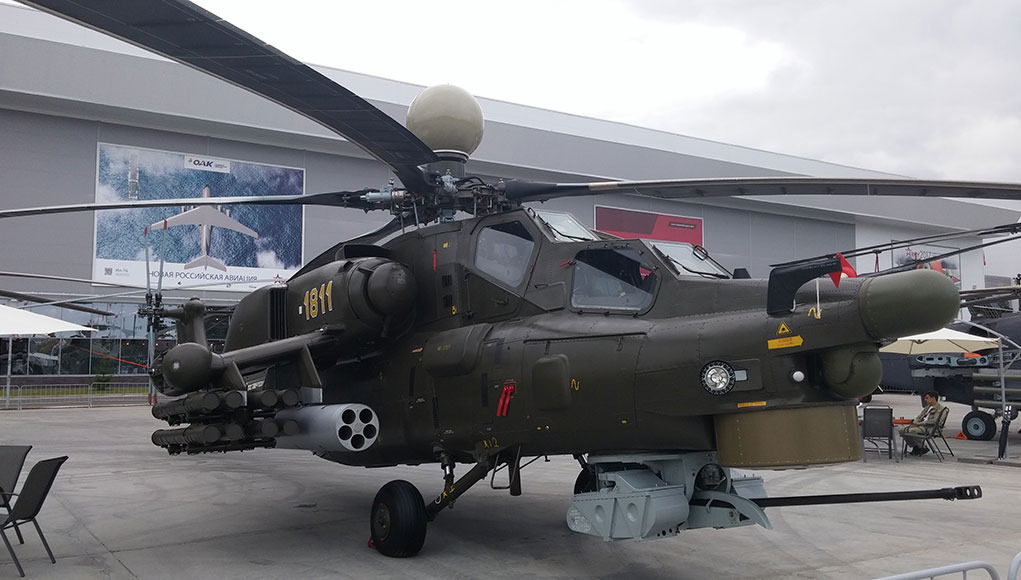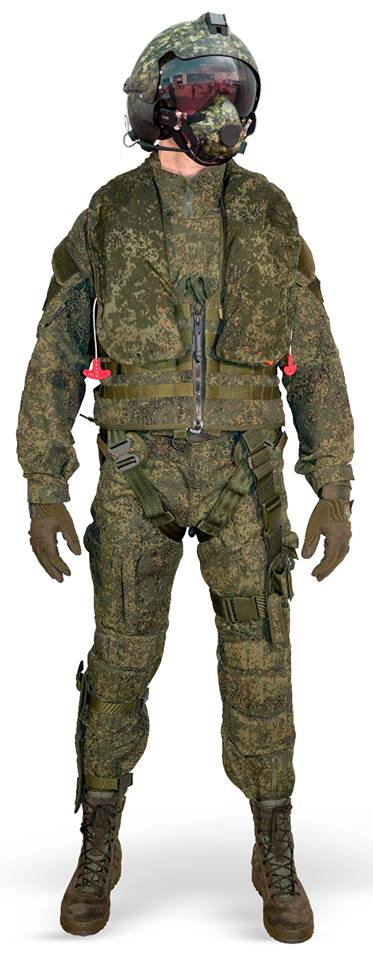
Helicopters in Support of Ground Operations
Apart from supporting the Syrians from the air, some of the Russian forces have joined the Syrian ground units to provide direct, fire suppression, close air support, assault transport and supply missions. On these missions, the Russian forces deployed from temporary forward bases, operating Su-25 attack aircraft, Mi-24/35, 28NE and Ka-52 attack helicopters, along with Mi-8AMTSh – configured for assault and attack missions. This variant is also fitted with a larger door on the right side and can be configured with a loading ramp in place of the usual clamshell doors at the rear.
Another helicopter proved effective in combat in recent years is the Mi-28 has seen extensive combat operations in Syria and Iraq, operating with the Russian and Iraqi air forces. For example, an air assault conducted by the Syrian ‘Tiger Force’ near Dir E-Zor on August 12, 2017, Russian helicopters were embedded with Syrian task force that conducted the night assault. Russian helicopters included Ka-52 that played in a support role, and Mi-8AMTSh providing assault transport to the task force, that also used Syrian Mi-8 assault helicopters and Mi-35 in the fire support role.
At Army 2017 expo held in August Russian manufacturers displayed some of the latest variants of those helicopters, upgraded to reflect combat lessons learned in Syria. For example, Russian Helicopters unveiled an improved and upgraded version of the Mi-8AMTSh, fitted with improved ballistic armor and self-protection. An improved version of the Night Hunter, Mi-28NM is also in final testing, prior to delivery to the Russian armed forces later this year.

Additional protection is provided for the crew by the Vulkan-VKS suits developed by the Armocom Center. The suite includes a bulletproof vest and ballistic helmet with built-in communications, providing protection against fragments and small arms with caliber up to 7.62mm. Thermally protected and flame retardant, Vulkan-VKS also provide knee and elbow joints protection in case of a hard landing.
Equivalent to the American Apache and European Tiger, the ‘Night Hunter’ as this helicopter is called, is equipped with large armament and sensor package including supersonic air-to-ground ATAKA missiles, and 80mm rocket pods, 30mm gun turret, and optional 23mm gun pods. The helicopters sent on those combat missions were equipped with the latest, most sophisticated means of self-protection, including ballistic protection for cockpits, engines, transmissions, and tubing.
Earlier versions include steel plates, but the latest designs use advanced plates made of lightweight composites and crashworthy seats for the crew, advanced heat suppression systems reducing engine exhaust heat, flares and radar and laser warning systems, missile approach sensors, and various infrared countermeasures to defeat man portable air defense missile systems (MANPADS). The latest version of Defensive Aids System (DAS) include the President S suite comprising RF and IR countermeasures. The system comprises various threat detection sensors including radar warning receivers (RWR), laser sensors and missile approach warning systems (MAWS) that detect both air/air and surface to air missiles (SAM) and multi purpose guided missiles and rockets fired from the ground. RF solutions include active EW and decoy dispensers that can deploy infrared decoys, chaff or active RF decoys.

Unmanned aerial systems were also used extensively in Syria. Systems known to have participated in the operations include the Orlan 10E multi-mission tactical drone, used for aerial surveillance, target acquisition, and battle damage assessment. Orlan 10E can stay on a mission for 10 hours, carrying a useful payload of 18 kg. Another micro-UAV deployed with the Russian ground forces is the Granat, serving as organic intelligence gathering asset with army battalions.















